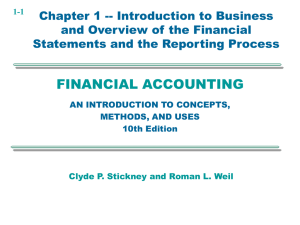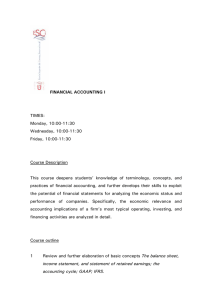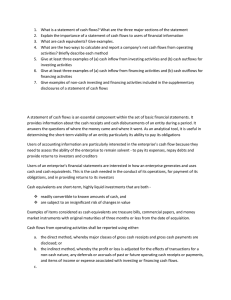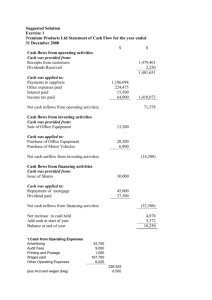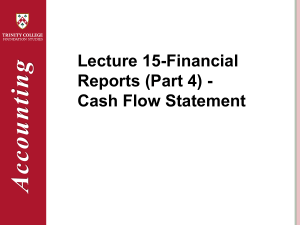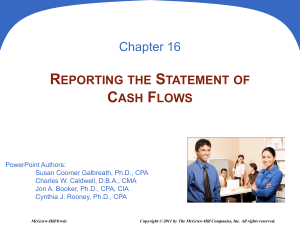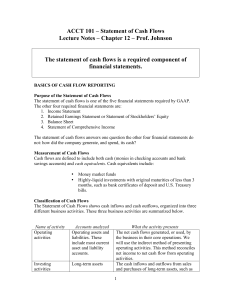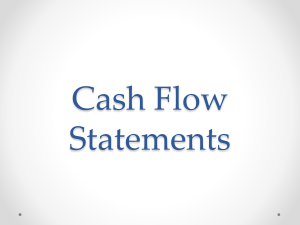Statement of Cash Flows - Introduction
advertisement
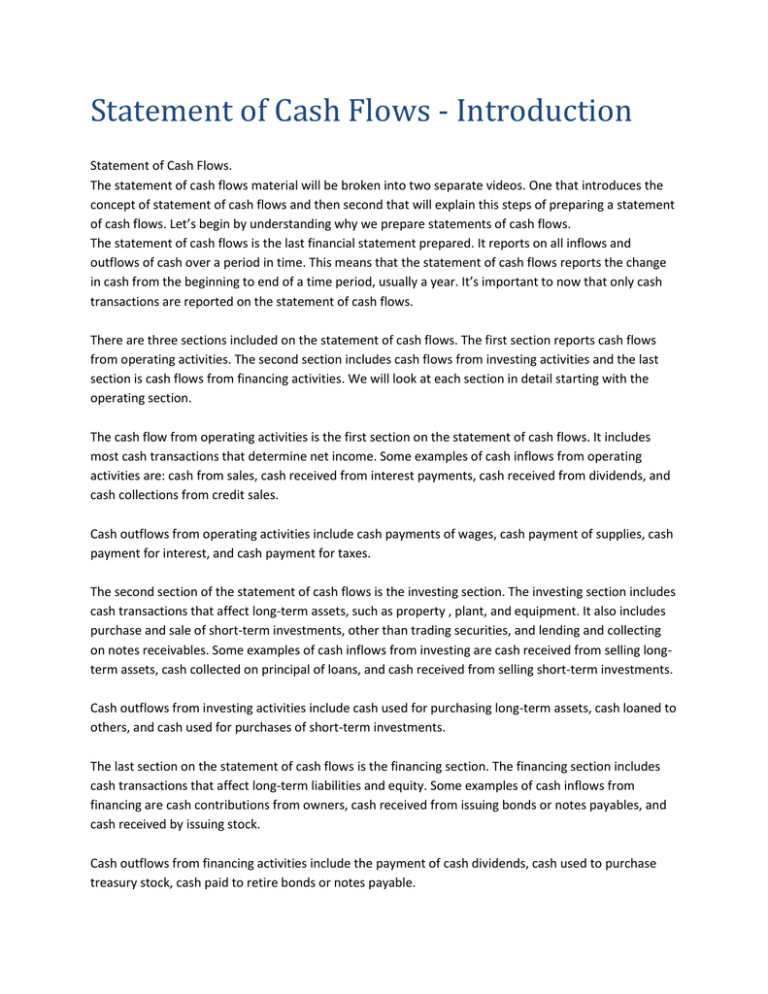
Statement of Cash Flows - Introduction Statement of Cash Flows. The statement of cash flows material will be broken into two separate videos. One that introduces the concept of statement of cash flows and then second that will explain this steps of preparing a statement of cash flows. Let’s begin by understanding why we prepare statements of cash flows. The statement of cash flows is the last financial statement prepared. It reports on all inflows and outflows of cash over a period in time. This means that the statement of cash flows reports the change in cash from the beginning to end of a time period, usually a year. It’s important to now that only cash transactions are reported on the statement of cash flows. There are three sections included on the statement of cash flows. The first section reports cash flows from operating activities. The second section includes cash flows from investing activities and the last section is cash flows from financing activities. We will look at each section in detail starting with the operating section. The cash flow from operating activities is the first section on the statement of cash flows. It includes most cash transactions that determine net income. Some examples of cash inflows from operating activities are: cash from sales, cash received from interest payments, cash received from dividends, and cash collections from credit sales. Cash outflows from operating activities include cash payments of wages, cash payment of supplies, cash payment for interest, and cash payment for taxes. The second section of the statement of cash flows is the investing section. The investing section includes cash transactions that affect long-term assets, such as property , plant, and equipment. It also includes purchase and sale of short-term investments, other than trading securities, and lending and collecting on notes receivables. Some examples of cash inflows from investing are cash received from selling longterm assets, cash collected on principal of loans, and cash received from selling short-term investments. Cash outflows from investing activities include cash used for purchasing long-term assets, cash loaned to others, and cash used for purchases of short-term investments. The last section on the statement of cash flows is the financing section. The financing section includes cash transactions that affect long-term liabilities and equity. Some examples of cash inflows from financing are cash contributions from owners, cash received from issuing bonds or notes payables, and cash received by issuing stock. Cash outflows from financing activities include the payment of cash dividends, cash used to purchase treasury stock, cash paid to retire bonds or notes payable. The operating, investing, and financing section only show cash transactions. However, because of the full-disclosure principle, companies are required to also prepare a separate schedule of important noncash investing and financing activities. These are activities that involve investing and financing activities but don’t involved cash. Some examples of these transactions would be purchase of long-term asset by using note payable, retiring debt by issuing stock, or exchanging equipment for another piece of equipment. Notice that none of the transactions include cash – that’s why they are reported in the noncash schedule instead of on the statement of cash flows. This is the end of our discussion on the introduction to the statement of cash flows. Please watch the next short video which will explain the steps taken to prepare the actual statement.


